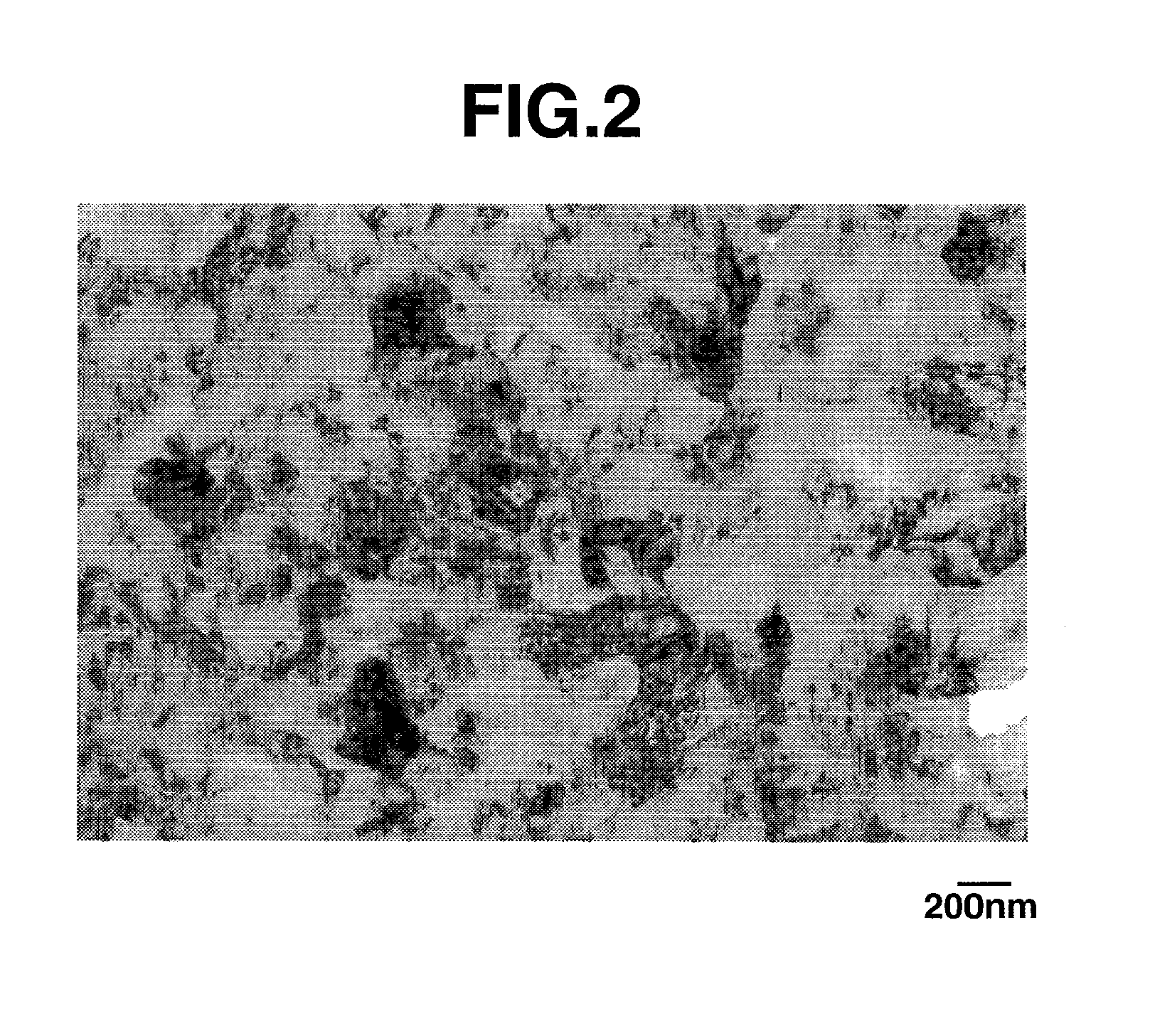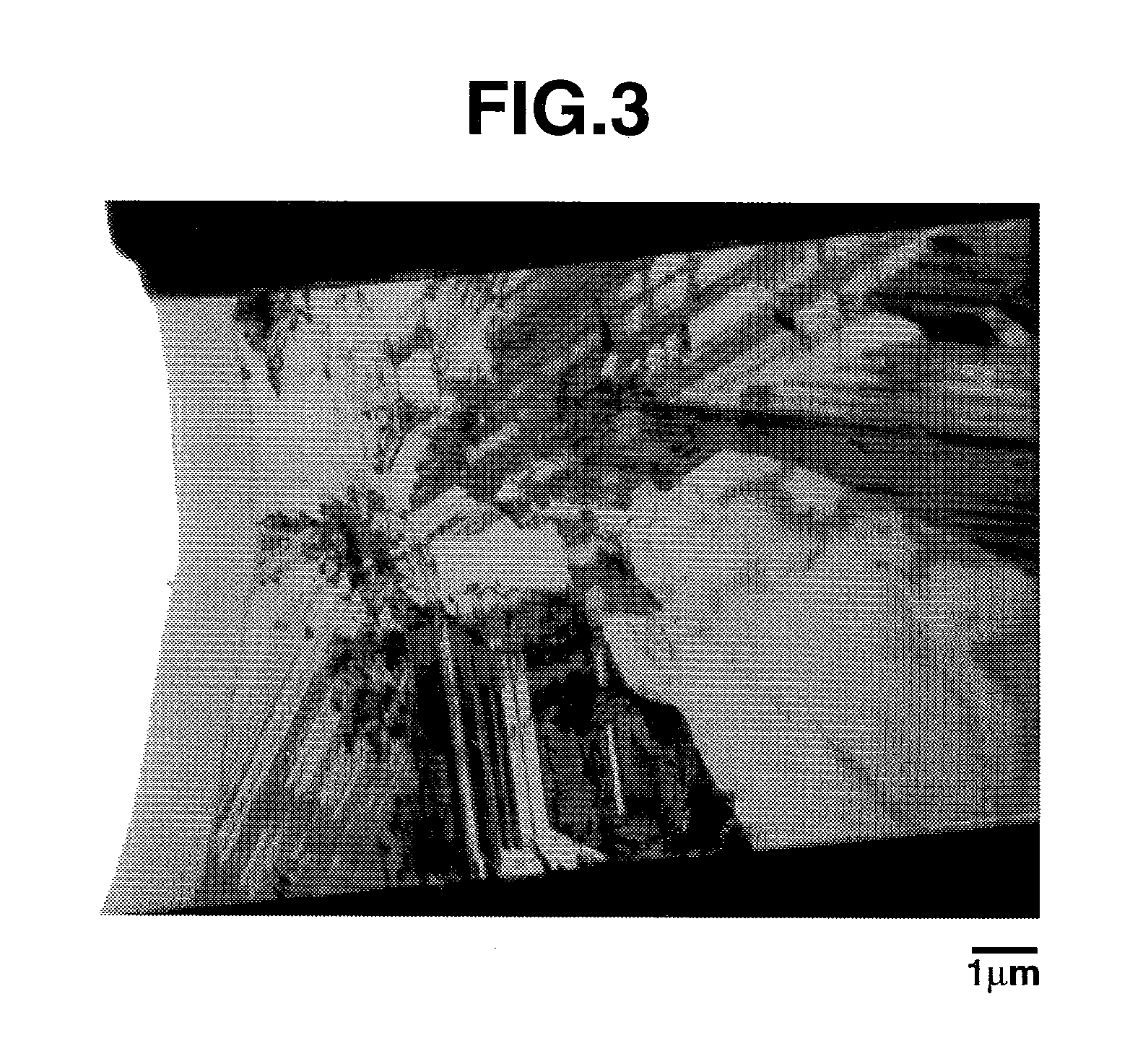Non-aqueous electrolyte secondary battery, negative electrode material, and making method
a secondary battery and negative electrode technology, applied in the field of non-aqueous electrolyte secondary batteries, can solve the problems of difficult control of cooling rate, failure to take full advantage of the potential battery capacity of silicon, and failure to overcome the outstanding problems of silicon negative electrodes, etc., to achieve low 1st cycle charge/discharge efficiency of silicon oxide, improve cycle performance, and high battery capacity
- Summary
- Abstract
- Description
- Claims
- Application Information
AI Technical Summary
Benefits of technology
Problems solved by technology
Method used
Image
Examples
example
[0117]Examples are given below for further illustrating the invention, but they are not to be construed as limiting the invention thereto. In Examples, all percents (%) are by weight, and the particle size is a median diameter D50 as determined by a particle size distribution instrument utilizing laser light diffractometry. In Tables, silicon oxide, polycrystalline silicon, and silicon particles are abbreviated as SiO, p-Si, and Si particles, respectively. A jet mill AFG-100 is available from Hosokawa Micron Group, and a classifier TC-15 is available from Nisshin Engineering Co., Ltd.
Preparation of Silicon Oxide Particles I-1
[0118]A mixture of equimolar amounts of silicon dioxide particles (BET specific surface area=200 m2 / g) and chemical grade metallic silicon particles (BET specific surface area=4 m2 / g) was heat treated in a hot vacuum atmosphere at 1,350° C. and 0.1 Torr to produce silicon oxide gas, which precipitated on a stainless steel substrate held at 1,000° C. The precipit...
examples 10 to 14
, Reference Example 1 & Comparative Example 2
[0143]A mixture of coated silicon oxide particles and silicon particles, prepared above, was diluted with N-methylpyrrolidone. A polyimide resin (solids 18.1%) as a binder was added thereto to form a slurry. The slurry was coated onto a copper foil of 12 μm thick by means of a doctor blade having a gap of 50 μm, vacuum dried at 200° C. for 2 hours, and pressed by a roller press at 60° C. into a negative electrode shaped form. Finally, pieces of 2 cm2 were punched out of the shaped form and used as a negative electrode. The composition of solid components is shown in Table 4.
Determination of Battery Properties
[0144]To confirm the effectiveness of the negative electrode material, the charge / discharge capacity and volume expansion of the material were measured as follows. Six lithium ion secondary cells were fabricated using the shaped form as the negative electrode and a lithium foil as the counter electrode. The electrolytic solution was a...
PUM
| Property | Measurement | Unit |
|---|---|---|
| crystallite size | aaaaa | aaaaa |
| specific gravity | aaaaa | aaaaa |
| temperature | aaaaa | aaaaa |
Abstract
Description
Claims
Application Information
 Login to View More
Login to View More - R&D
- Intellectual Property
- Life Sciences
- Materials
- Tech Scout
- Unparalleled Data Quality
- Higher Quality Content
- 60% Fewer Hallucinations
Browse by: Latest US Patents, China's latest patents, Technical Efficacy Thesaurus, Application Domain, Technology Topic, Popular Technical Reports.
© 2025 PatSnap. All rights reserved.Legal|Privacy policy|Modern Slavery Act Transparency Statement|Sitemap|About US| Contact US: help@patsnap.com



